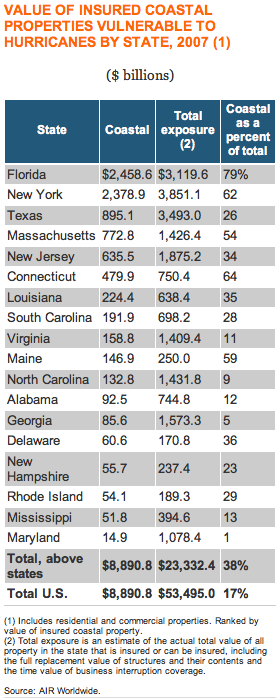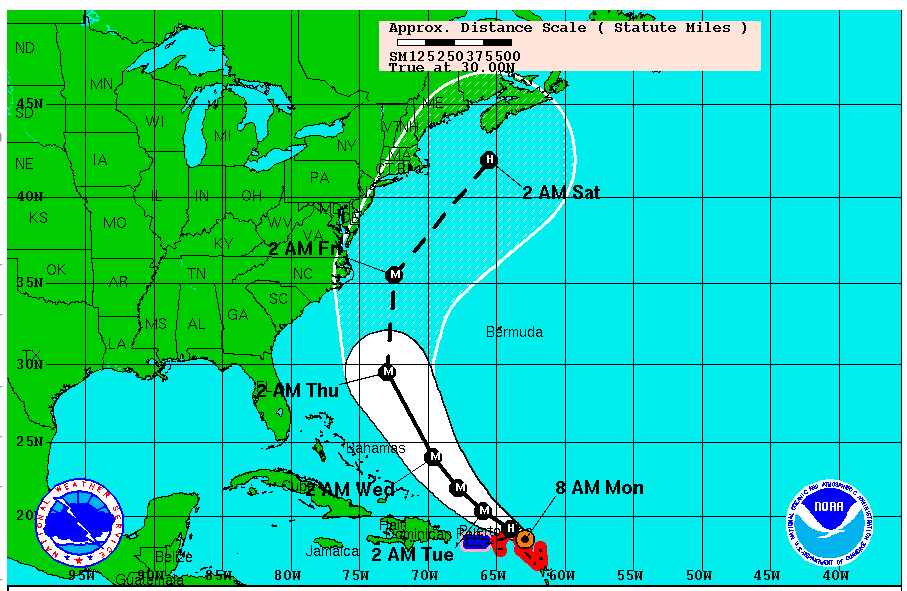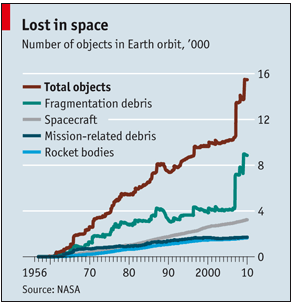There is a fictional book titled Landstrike that details the scenario of a disastrous hurricane striking the New York City area. From the book’s website:
Someday, a major hurricane will strike New York City. Government forecasters concede they’ll be unable to give the City much notice, while the City’s emergency planners admit evacuation is impossible. It’s a recipe for disaster on a scale to dwarf Hurricane Katrina’s devastation of New Orleans, potentially leading to the largest natural catastrophe in American history.
As we all know, NYC is very much unprepared for the type of storm that frequents the warmer waters of the Gulf of Mexico.
Some may recall the story of the Great Hurricane of 1938 that struck eastern Long Island and New England, killing more than 700 people, destroying more than 50,000 buildings and knocking down more than a quarter billion trees.
If a serious hurricane were to strike the NYC area today, it would undoubtedly be one of the most costly natural disasters in U.S. history. As the Insurance Information Institute states, New York has the highest total exposure to a storm.

Not to be a fear monger, but now let us look at the projected path of Hurricane Earl, courtesy of the National Hurricane Center (NHC). I understand that this is a projection through Saturday, which, when talking about the path of storms, is long-term and certainly not definitive.
Still, the image is frightening (note how close to NYC the storm is projected Friday afternoon/evening):

Moments ago, Hurricane Earl reached category 3 status with winds near 120 mph, according to the NHC. We will keep an eye on updates from the center.
This is a good time for businesses to review their business continuity and disaster preparedness plans. There is no such thing as being too prepared.




